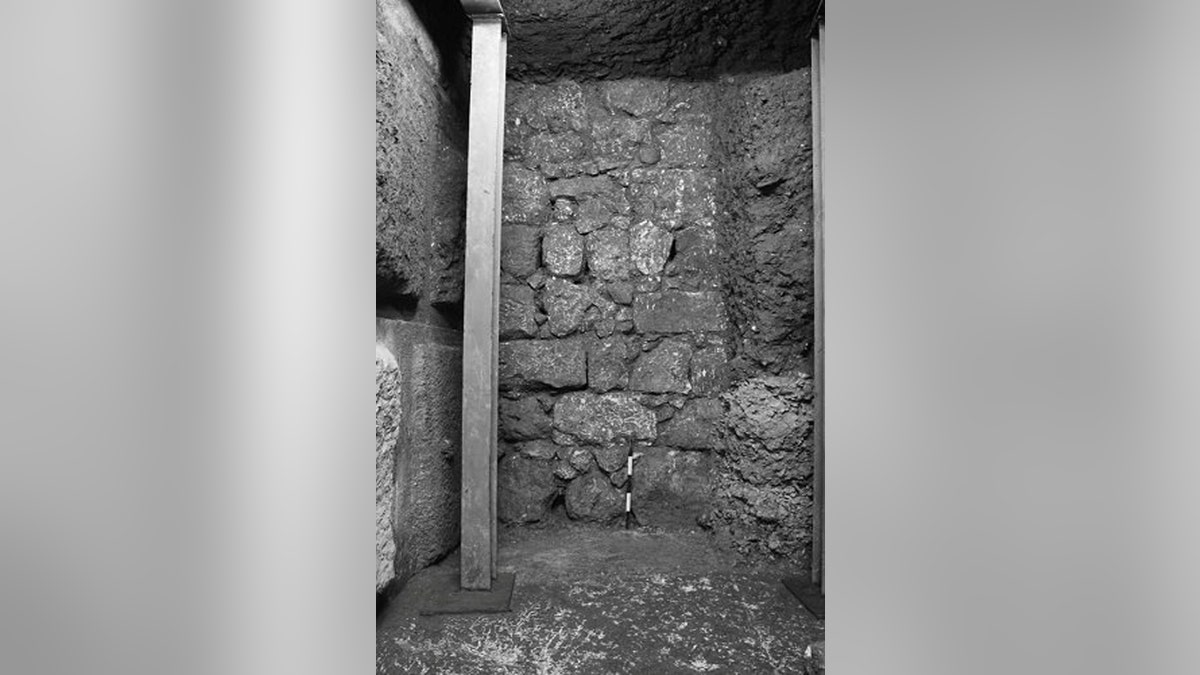Fox News Flash top headlines for Oct. 21
Fox News Flash top headlines for Oct. 21 are here. Check out what's clicking on Foxnews.com
A 2,000-year-old street believed to have been created under the orders of Pontius Pilate has been found in Jerusalem.
A research published in Tel Aviv: Journal of the Institute of Archaeology details a hidden road that has been excavated for the past six years. More than 100 coins that date back to 31 A.D. were founding underneath the paving stones, which "provides strong evidence that the street was commissioned by Pontius Pilate," according to a statement announcing the findings.
"Dating using coins is very exact," said one of the study's co-authors, Donald Ariel, an archaeologist and coin expert with the Israel Antiquities Authority, in the statement. "As some coins have the year in which they were minted on them, what that means is that if a coin with the date 30 CE on it is found beneath the street, the street had to be built in the same year or after that coin had been minted, so any time after 30 CE."

This is a location map, marking excavation sites. CREDIT (drawing: D. Levi, IAA; printed by permission of the Survey of Israel).
PONTIUS PILATE'S RING MAY HAVE BEEN DISCOVERED AT ANCIENT BIBLICAL FORTRESS
"However, our study goes further, because statistically, coins minted some 10 years later are the most common coins in Jerusalem, so not having them beneath the street means the street was built before their appearance, in other words only in the time of Pilate," Ariel added.
The newly discovered stretch of road spans 220 meters (721 feet) and goes from the Pool of Siloam to Temple Mount. This roadway likely used by worshippers who were headed toward Temple Mount, considered a holy site by Christians and Jews.

The ancient walkway most likely used by pilgrims as they made their way to worship at the Temple Mount was first discovered in 1894 by British archaeologists in the "City of David" within the walls of Jerusalem. (Credit: SWNS)
The Temple, which was built in the Old City of Jerusalem, is also the site where Jesus is said to have cured a man's blindness by sending him to wash in the Siloam Pool.
The entire street was likely 600 meters long and 8 meters wide, made from massive stone slabs, a trademark of the Roman Empire. The researchers believe it would have taken around 10,000 tons of quarried limestone rock to use in the construction of the road.
The fact that the road is considered "opulent and grand" is additional evidence that this was a road of importance.
'HOLY STAIRS' CLIMBED BY JESUS BEFORE CRUCIFIXION OPENS FOR FIRST TIME IN 300 YEARS
"If this was a simple walkway connecting point A to point B, there would be no need to build such a grand street," the study's co-authors, Joe Uziel and Moran Hagbi, added in the statement. "At its minimum, it is eight meters wide. This, coupled with its finely carved stone and ornate 'furnishings' like a stepped podium along the street, all indicate that this was a special street."

Researchers have now found more than 100 coins beneath the paving stones that date the street to around the year 31 A.D. (Credit: SWNS)
Nahshon Szanton, another of the study's co-authors, said the street may have been grandiose for several reasons: to "appease the residents of Jerusalem;" to see how "Jerusalem would fit in the Roman world;" or to "aggrandize his [Pilate's] name through major building projects."
In November 2018, a ring that was discovered 50 years ago was identified as likely belonging to Pilate after the Greek inscription “Pilatus” was seen clearly on the ring.





















